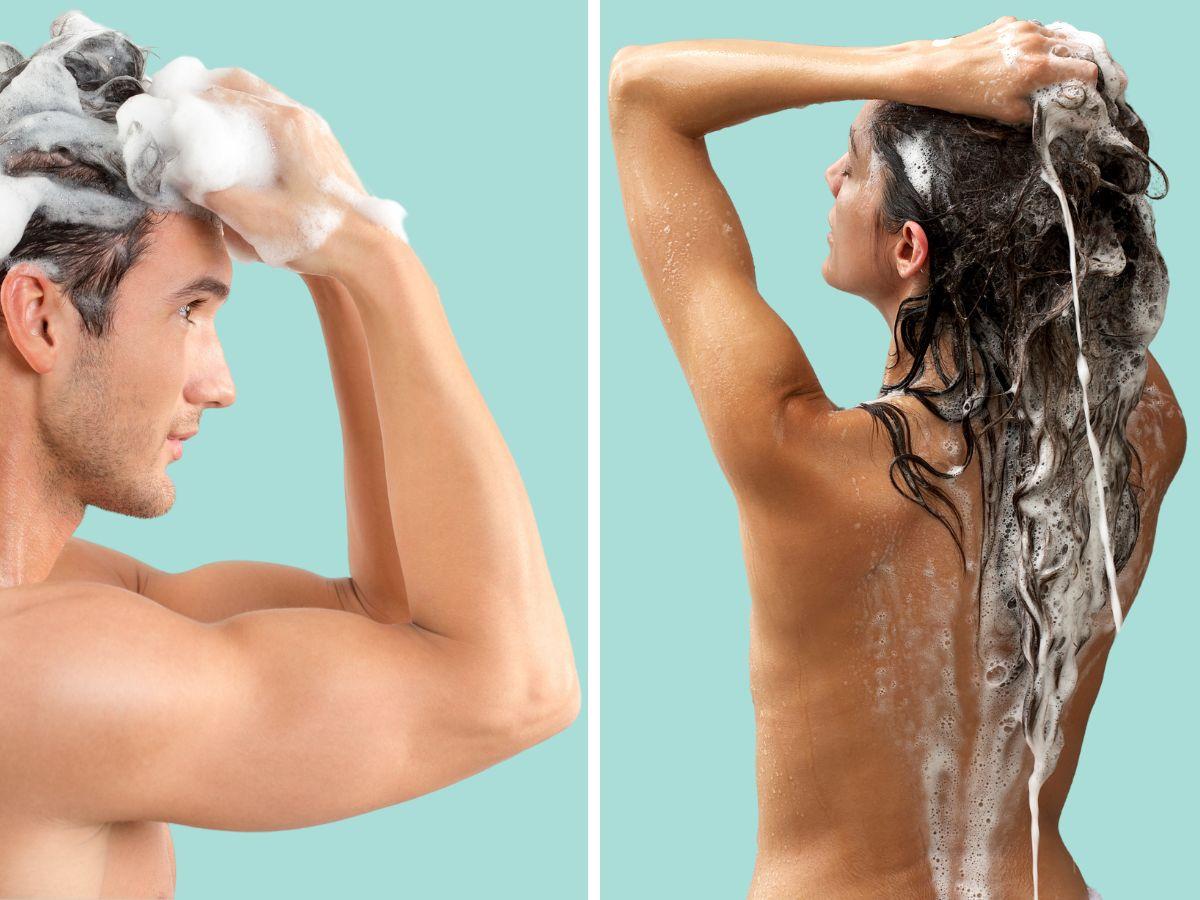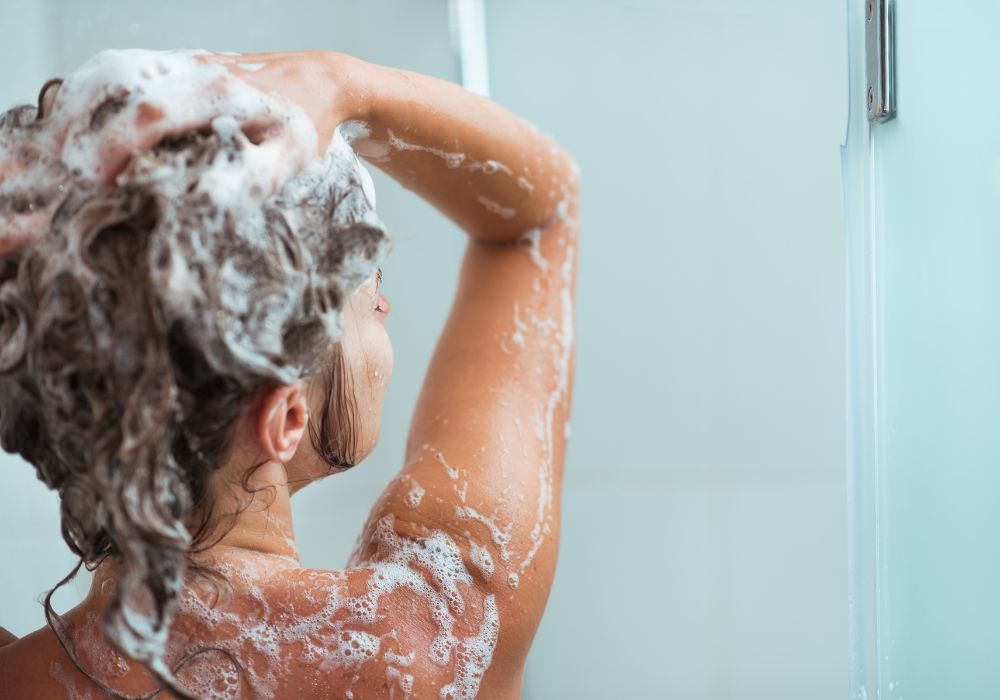Washing your hair is something we all do, but many of us don’t realize how important the technique really is. It’s more than just lather, rinse, repeat. The way you shampoo can affect how your scalp feels, how shiny your hair looks, and even how well your styling products work. Getting it right means healthier hair, less buildup, and a routine that actually supports your hair goals.
In this guide, we’ll take a deep dive into the five steps that make the biggest difference when it comes to shampooing your hair properly. Plus, we’ll explore what to look for in a shampoo and why ingredient-conscious options are gaining popularity.
Step 1: Thoroughly Wet Your Hair
Start by saturating your hair completely with warm water. This might seem like a no-brainer, but it’s easy to rush this step. Water opens up the hair cuticle and preps your scalp for cleansing. Warm water (not hot) helps lift dirt, sebum, and styling products from your scalp and strands, allowing the shampoo to do its job more effectively.
If your hair isn’t fully soaked, the shampoo won’t spread evenly and you’ll need to use more product than necessary. Make sure you give it at least 30 seconds under the water before applying shampoo.
Step 2: Use the Right Amount of Shampoo

Using the right amount of shampoo is just as important as choosing the right formula. If you use too much, you’re likely to strip your hair of its natural oils and cause unnecessary dryness. Use too little, and your scalp may not get clean.
A coin-sized amount is generally enough for short to medium-length hair. If your hair is thick, curly, or past your shoulders, you might need a bit more. Dispense it into your palms, rub your hands together, and then apply it to your scalp. This helps distribute the product evenly.
Always concentrate shampoo at the scalp where oil and dirt build up. The ends of your hair will get cleaned when the shampoo rinses down, so there’s no need to scrub them directly.
Step 3: Massage the Shampoo into Your Scalp

This step is all about stimulation and gentle cleansing. Using your fingertips (not your nails), massage the shampoo into your scalp in small, circular motions. Think of it as a mini scalp treatment rather than just a cleaning step.
Massaging improves blood circulation, which supports healthy hair growth. It also helps loosen buildup, dead skin cells, and excess oil. Be gentle—scrubbing too hard can cause irritation, especially if you have a sensitive scalp.
Take your time with this step. A thorough massage for 1–2 minutes helps the shampoo work effectively and feels surprisingly relaxing.
Step 4: Rinse Your Hair Thoroughly
Rinsing is more than just a quick splash of water. Incomplete rinsing is one of the most common shampooing mistakes and can lead to dull hair, scalp buildup, and clogged follicles.
Use warm water and make sure you rinse from the scalp down. Keep rinsing until the water runs completely clear. Pay extra attention to the back of your head and behind your ears—areas where product often gets trapped.
Lingering shampoo residue can also interfere with conditioners or treatments you apply afterward, so it’s worth spending a little extra time here.
Step 5: Follow with Conditioner

Once your scalp and hair are clean, it’s time to restore moisture with a good conditioner. Focus on applying conditioner to the mid-lengths and ends of your hair, which tend to be drier and more prone to damage.
Avoid putting conditioner directly on your scalp unless it’s a scalp-specific formula. Let it sit for 2–5 minutes, depending on your hair type and the product’s instructions. Then rinse it out with cool water. Cool water helps close the cuticle and lock in moisture, which leaves your hair smoother and shinier.
Ingredient-Focused Haircare: What to Look For
There’s a growing interest in shampoos made with gentler, plant-based ingredients—and for good reason. Harsh sulfates and alcohols can strip the scalp and damage the hair’s natural protective layer.
If you’re exploring cleaner shampoo options, this formula by Apple & Bears highlights the kind of ingredients that reflect this growing trend. This shampoo includes ingredients like:
- Aloe Vera Juice: Known to soothe irritation and support scalp hydration.
- Sage Water: A natural cleanser that also refreshes the scalp.
- Safflower Seed Oil: Helps soften hair and boost shine without weighing it down.
The shampoo also includes essential oils such as mandarin, rosemary, and geranium. These not only offer a refreshing scent but also deliver benefits like balancing oil production and supporting hair strength.
Importantly, it’s free from alcohol, gluten, and animal-derived ingredients. Certified by PETA and the Vegetarian Society, it’s also packaged in recyclable bottles—a thoughtful detail for eco-conscious beauty fans.
If you’re curious about clean beauty or looking to switch to a shampoo that’s gentler on both your hair and the planet, APPLE & BEARS offers a solid example of what to look for.
What Happens When You Get It Right
When you follow a consistent, effective shampoo routine, you may notice:
- Less scalp itchiness and irritation
- Improved manageability
- Less frizz and more shine
- Longer-lasting hairstyles
- Healthier ends with fewer tangles
Clean, well-prepped hair also responds better to masks, serums, and treatments. If you’ve invested in high-quality haircare, getting the shampoo step right maximizes those results.
Final Thoughts
Shampooing seems simple, but it’s foundational to any good haircare routine. Skipping steps or using the wrong techniques can quietly sabotage your efforts, no matter how expensive your products are.
By taking a few extra minutes to wet your hair thoroughly, apply the right amount of shampoo, massage gently, rinse completely, and follow with conditioner, you’re giving your hair the care it needs to thrive.
And if you’re exploring ingredient-conscious options, products like APPLE & BEARS show that clean beauty and performance don’t have to be mutually exclusive. The key is always finding what works for you—and using it the right way.
Healthy, vibrant hair starts in the shower. Treat that step with care, and the results will speak for themselves.

